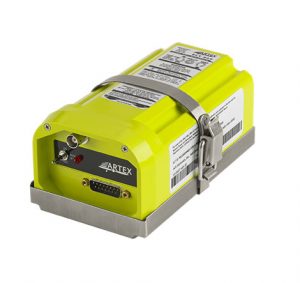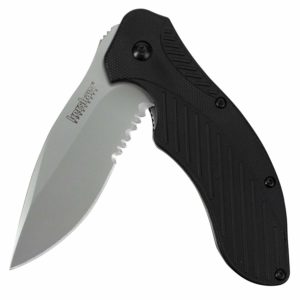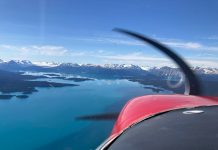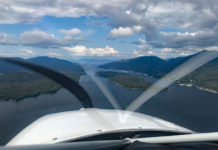As we prepared to embark on our grand tour of Canada and Alaska survival equipment became a major concern. But we should always give some thought to those what-if situations before we begin any flight. On a trip where the nearest road may be 100 miles away we naturally focus more on the potential emergencies we may face, but even a quick trip to Vegas can end in disaster if we are not prepared.
Admittedly a great deal of emergency preparedness is mental – bad decisions cause more problems than equipment failures – but here I would like to focus on what we need to bring to be prepared to deal with an emergency once it has unfolded. Much of this will focus on our upcoming Alaska trip, but I will also try to include the gear we might need for other survival situations.
There is no substitute for being found quickly.
Everything else you can do to help yourself pales in comparison. To that end a 406MHz ELT is the best thing you can get. A Personal Locator Beacon (PLB) is a good alternative if you are not ready to upgrade your 121.5 ELT.
The bad news: a new 406 MHz ELT is about $1,000 and a PLB with built in GPS runs about $600. On the other hand, getting rescued quickly is priceless.

While you’re waiting for search and rescue to arrive you need to keep yourself alive and make it as easy as possible to find you. Your priorities are shelter, water, and food. Depending on the weather water may move to number one. Both Canada and Alaska require that you have the means to start a fire, provide shelter, provide or purify water, and visually signal distress.
To make fire you need waterproof matches and/or a lighter, a candle, fire starters (or fuel tablets), and a saw and ax for cutting wood. Many places in Canada and Alaska are wet much of the year, so you need to be able to get a fire going without expecting to find dry wood. A backpack stove is also a good idea. Get one that will run on avgas.
For shelter they suggest the following items: tent, tarpaulin, raincoat, space blanket, sleeping pad, sewing kit, and mosquito net. In colder weather a sleeping bad is also recommended. Depending on the climate you can pare this list back to suit local conditions. An orange tarp is also good for getting the attention of rescuers. To that list I would add some light rope such as parachute cord.
If you are flying over dry country you need to have water with you. It is as simple as that, and the hotter the weather the more water you need. On our Alaska trip water is readily available almost everywhere, so only a small amount needs to be carried. However, a means to collect and purify it is important. Backpack-type water filters are a good bet if you have room and weight to spare. If not, water purification tablets work well and are very small and light. The water doesn’t taste so good after using them, but the taste can be masked with a little Crystal Lite or other drink powder.
I like to take two plastic quart bottles and a collapsible one gallon water container. You can also boil water of you have a pot and a stove.
The ELT or PLB will get rescuers close to you, but to zero in on your exact location some other signaling devices may be needed. A holographic mirror is great if the sun is shining, but a strobe will do you more good at night or on a cloudy day. The strobe is also preferable to flares by current thinking. A whistle is also great for getting the attention of rescuers as they approach, especially if you are weak from exposure or injury. A cell phone may be a great aid to rescue if you are in a area with cell coverage, but in the remote parts of Canada and Alaska a satellite phone is the way to go. An Iridium phone will cost about $200 for a two week trip. There are several people on the Internet who will rent them to you for short term use. I have used GlobalCom Satellite Communications. Strobes and PLBs are available from Glasair Aviation and a number of other sources.
Canada and Alaska both require emergency food, with Alaska being the more stringent by demanding two weeks of food per person. A note here: two weeks of food means two weeks at a survival level not at 3,000 calories per day. When water is readily available dehydrated food is great, but in other areas such as deserts that would not work so well.
Military MREs are also a good way to go. They are nicely packaged and contain a massive amount of calories in a small space. In bear country a food bag and some rope is a good idea to get your food up in a tree out of reach and away from yourself. Be sure to string it up on a branch that is too small to support a hungry bear. Alaska suggests, in addition to food, some means of getting your own food.. Fishing line, hooks, etc. are recommended, as is wire for snares.
A gun was required equipment for many years, but in deference to Canada’s aversion to firearms, especially handguns, Alaska has dropped the requirement. Canada will allow you to bring a rifle or shotgun into the country if you register it upon entry and pay a $50 fee. Handguns are not allowed at all, ever, so don’t try it. This will slow your customs processing a bit, but it is probably a good idea for at least someone in a group to be armed just in case. In the back country you are not necessarily at the top of the food chain.
The gun you choose should be compact, reliable, and powerful. Your target may be a 1,000 pound bear at close range. My recommendation for a rifle is a Marlin 1895 lever action in .45-70 caliber. For a shotgun I would suggest a 12 gage Remington 870 pump with an 18 inch barrel. Get slugs for the shotgun and a few rounds of bird shot. All things considered I would recommend the shotgun over the rifle for its superior versatility.
A few comments about clothing. In wet country cotton is a poor choice. Wet cotton will actually make you colder than if you were naked. The modern synthetic fibers or good old fashioned wool are much better choices. Think layers. With multiple layers you can easily adjust to any weather without carrying too many items. Long sleeve shirts are also a good idea, because they can protect you from sun or mosquitos. Just roll up the sleeves for warmer weather.
With the amount of water we will encounter on our trip a life vest is strongly recommended. I suggest a compact inflatable vest such as those carried by Bass Pro Shop. They are manually inflatable or have CO2 cartridges available at the pull of a tab. Do not get an automatically inflating vest, because it may inflate before you can get out of your plane.
 A few more items round out my list. A pocket knife and small sharpening stone should be included and some sun screen and lip balm. Dark glasses are also important in snow country or in the desert, as is a hat. I would also throw in a pocket compass, a small note pad and pencil or pen, and a first aid kit. As much of this stuff as possible should be on your person. A fishing-type vest with lots of pockets works well. The rest of your survival gear should be in a bag or day pack that is readily available. You may have to make a quick exit from your plane with no chance to go back for the rest of your gear.
A few more items round out my list. A pocket knife and small sharpening stone should be included and some sun screen and lip balm. Dark glasses are also important in snow country or in the desert, as is a hat. I would also throw in a pocket compass, a small note pad and pencil or pen, and a first aid kit. As much of this stuff as possible should be on your person. A fishing-type vest with lots of pockets works well. The rest of your survival gear should be in a bag or day pack that is readily available. You may have to make a quick exit from your plane with no chance to go back for the rest of your gear.
We all hope that at least most of this gear comes home unused, but it is always better to, as the Boy Scouts say, Be Prepared.



